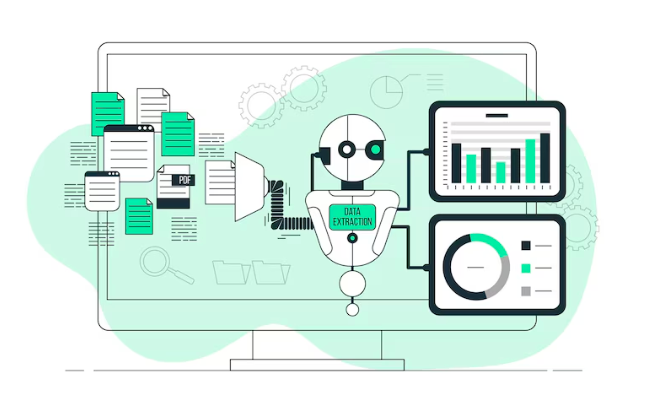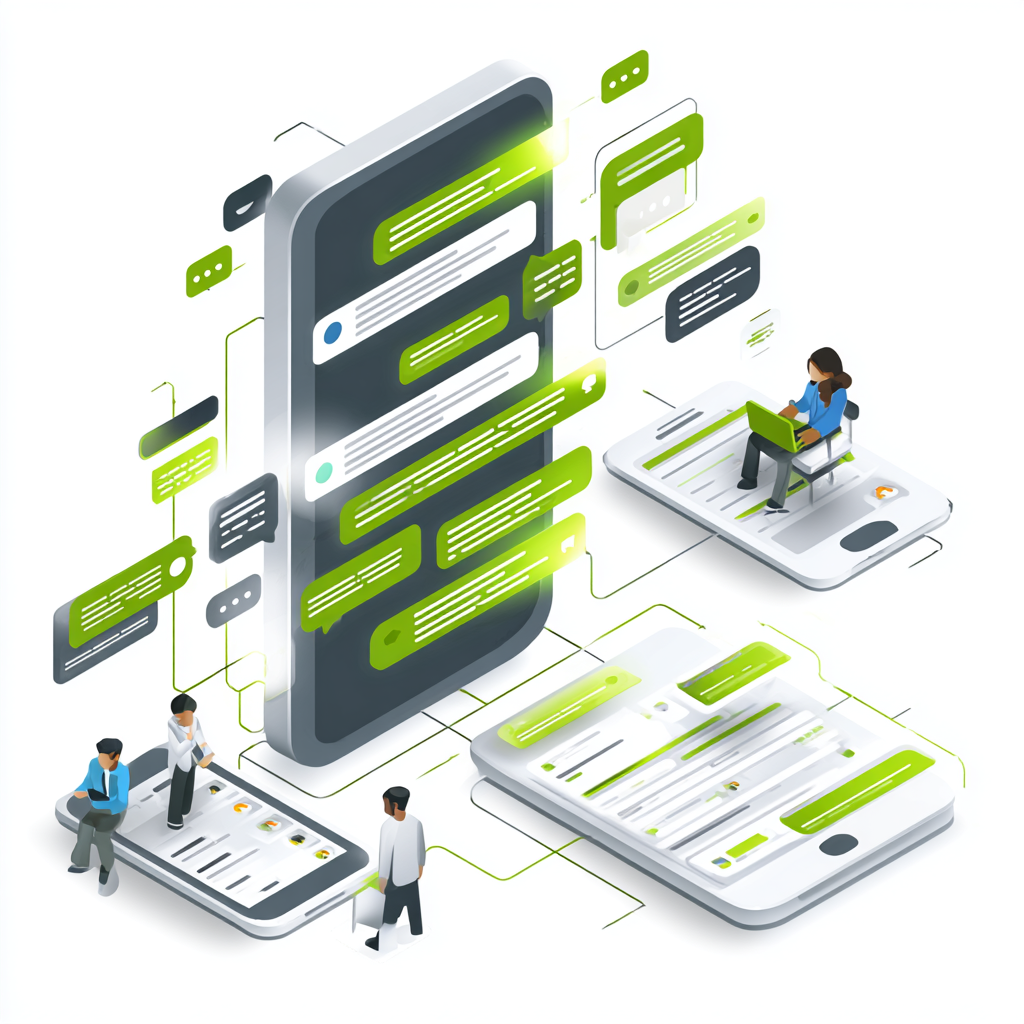In the business world, where customer expectations are continually rising, delivering an exceptional customer experience (CX) is essential for staying competitive. One of the most effective ways businesses do this is by leveraging AI tools to enhance customer experience. These technologies not only make service faster, but also make it more innovative, personalized, and incredibly efficient. This comprehensive guide will explore how AI is reshaping the customer experience, the top tools available today, their key benefits, how businesses are utilizing them, and what to consider before implementing them. We’ll also look at real-world case studies, future trends, and practical tips to help you get started.
What are AI tools for customer experience?
AI tools for customer experience are software applications that utilize artificial intelligence to automate, analyze, and enhance customer interactions. These tools utilize natural language processing (NLP), machine learning (ML), predictive analytics, and sentiment analysis to understand customer needs and deliver more effective service. Instead of manually responding to every customer query or guessing what a customer wants, businesses can now utilize AI to deliver prompt, relevant, and context-aware responses that enhance satisfaction and loyalty. They also reduce the workload on human agents, allowing them to focus on more complex issues.
Categories of AI tools used in customer experience
Let’s break down some of the major categories of AI tools and how they contribute to a stronger customer journey.
1. Chatbots and virtual assistants
Chatbots are AI-powered agents that simulate human conversation. They can answer questions, solve issues, and guide users through processes. Many chatbots today utilize natural language processing to comprehend user intent and provide accurate responses. Examples: Zendesk AI, Drift, Intercom, IBM Watson Assistant
- Use case: A chatbot on an e-commerce website assists customers in finding a product, tracking their order, or initiate a return process without human intervention. Some advanced bots can even handle payment issues and give personalized product suggestions.
2. Sentiment analysis tools
These tools scan customer messages, reviews, or social media posts and determine their emotional tone. They help businesses understand how customers feel about their brand, services, or products in real time. Examples: MonkeyLearn, Lexalytics, Brandwatch
- Use case: A SaaS company tracks online sentiment to measure customer happiness after a major product update. If feedback is mostly negative, they can take quick action to improve the product or reach out to dissatisfied users.
3. Recommendation engines
AI-powered recommendation systems analyze user behavior and suggest products, content, or actions based on preferences and past activity. This technology powers the personalized experiences we now expect from platforms like Netflix or Amazon. Examples: Amazon Personalize, Adobe Sensei, Dynamic Yield
- Use case: Streaming platforms and online retailers utilize this to personalize user experiences and boost sales. AI can also suggest blog posts, articles, or other content to keep users engaged and interested.
4. Voice assistants and IVRs
AI voice systems can process spoken language, interpret commands, and guide customers over the phone or through voice-enabled apps. Intelligent IVRs (interactive voice response systems) utilize speech recognition to assist customers without requiring a human agent. Examples: Google Dialogflow, Amazon Lex, Nuance
- Use case: Telecom companies use AI IVRs to automate bill inquiries and service requests. This reduces call center volume while ensuring customers get immediate assistance.
5. Customer analytics platforms
These tools track and analyze customer behavior across various channels to provide valuable insights for enhancing services. They integrate data from web interactions, purchase history, mobile apps, and other sources to create a comprehensive customer profile. Examples: Qualtrics, Zoho CRM (with Zia AI), Salesforce Einstein
- Use case: A retail brand uses these platforms to understand drop-off points in the buying journey and optimize accordingly. With predictive analytics, they can also anticipate future behavior and offer proactive service.
10 Best AI tools for customer experience
Here are 10 AI tools that can help improve Customer Experience (CX) across different touchpoints:
- Zendesk AI: Uses machine learning to automate customer support, suggest articles, and assist agents in responding faster and more accurately. Zendesk AI stands out because it enables faster resolution times, improves response accuracy, and reduces agent workload by intelligently routing and categorizing requests.
- HubSpot Service Hub: Offers AI-powered chatbots, ticketing, and customer feedback tools to personalize and streamline support experiences. It stands out because it offers a seamless experience for customers and support teams, with built-in CRM integration that personalizes every interaction based on user history.
- Intercom: Combines AI chatbots with human support to help businesses offer real-time, conversational customer experiences. Its proactive engagement tools and customizable bots allow businesses to guide users and boost conversions while keeping support efficient.
- Freshdesk by Freshworks: Offers AI tools, including Freddy AI, to automate ticketing, suggest responses, and streamline workflows. Freddy AI helps teams handle more requests with fewer resources while improving first-response accuracy and agent efficiency.
- Tidio: A live chat platform with AI-powered bots that engage website visitors, answer FAQs, and generate leads. Tidio offers a quick and easy setup with affordable pricing, making it ideal for small to medium businesses looking to automate basic support.
- Drift: Focused on AI chatbots for B2B businesses, helping qualify leads, book meetings, and guide prospects through the sales funnel. Drift eliminates wait times and manual sorting for leads, creating a more dynamic and responsive sales process through real-time conversations.
- Ada: No-code AI chatbot builder that automates personalized customer service and support across multiple channels. With multilingual support and deep CRM integration, Ada ensures consistent customer experiences across messaging apps, websites, and apps.
- Coveo: Uses AI for intelligent search, recommendations, and personalization to enhance self-service portals and e-commerce platforms. Coveo enhances self-service experiences, helps customers find what they need faster, and improves content discoverability on websites and help centers.
- LivePerson offers AI-powered messaging and voice bots to automate customer interactions across SMS, WhatsApp, and the web. It enables scalable, AI-driven interactions with human fallback, empowering businesses to offer 24/7 customer engagement with less overhead.
- Zoho Desk: Integrates Zia, Zoho’s AI assistant, to analyze customer sentiment, suggest solutions, and prioritize tickets. Zia AI brings intelligence to the heart of customer support by identifying urgent cases, recommending actions, and learning from past tickets to improve over time.
Real-world examples of AI tools in action
Let’s examine how businesses across various industries utilize AI to enhance customer experiences.
- Domino’s Pizza uses AI-powered chatbots for ordering and tracking. Customers can order via Facebook Messenger or Google Home, streamlining the experience.
- Sephora offers virtual assistants that recommend products based on user preferences and facial recognition tools for trying on makeup virtually.
- Spotify utilizes recommendation algorithms that engage users by offering music tailored to their moods, interests, and past listening preferences.
- American Express leverages AI to analyze customer behavior and detect fraud, ensuring smoother, safer financial transactions.
Key benefits of AI tools for customer experience
- Speed and efficiency: AI systems work 24/7 and can handle thousands of requests simultaneously without fatigue.
- Personalization: AI utilizes data to tailor interactions, offers, and content to each user.
- Consistency: Customers receive accurate and consistent information across all channels.
- Cost reduction: Automating routine tasks reduces labor costs and frees up human resources, allowing for more efficient resource allocation.
- Actionable insights: AI analyzes patterns in data to help businesses understand what customers want.
Things to consider before implementing AI tools
- Integration: Ensure your AI tools can connect with your CRM, website, and other platforms.
- Data privacy: Use AI ethically and ensure it complies with data protection laws like GDPR.
- Staff training: Train your team on how to work with AI tools, not against them.
- Customer transparency: Inform users when interacting with AI versus a human.
- Scalability: Choose tools that grow with your business.
Future trends in AI and customer experience
AI is evolving fast, and the future promises even more impactful innovations:
- Hyper-personalization: More accurate personalization through real-time data analysis.
- AI + human collaboration: Combining AI with human empathy to enhance support.
- Emotion AI: Tools that adapt responses to detect tone, mood, and facial expressions.
- Voice commerce: More customers are using voice assistants to shop and interact.
Getting started with AI for customer experience
Getting started with AI for customer experience means exploring innovative tools that help businesses deliver faster, more personalized, and seamless customer interactions.
- Start small: Begin with one or two tools that solve clear pain points.
- Use your data: Feed the AI with relevant, quality data to improve outcomes.
- Choose reliable vendors: Opt for platforms with good support and a proven track record of success.
- Measure impact: Track how AI affects key metrics, such as response time, satisfaction, and conversion rates.
- Iterate and improve: Continuously evaluate and update your AI strategy.
Making the customer experience rewarding with AI
Artificial intelligence (AI) tools are revolutionizing how businesses engage with customers. From chatbots and voice assistants to predictive analytics and sentiment analysis, these technologies enable brands to become faster, more responsive, and more attuned to their customers’ needs. The best part? AI is no longer just for big corporations. With numerous affordable and scalable options, businesses of all sizes can deliver smarter, more delightful experiences that foster loyalty and drive growth. Are you just getting started or looking to expand your use of AI? The key is to stay informed, be strategic, and never lose sight of the human element that makes the customer experience exceptional. Explore one or two of these tools this week and see how even small changes can impact your customer experience.





